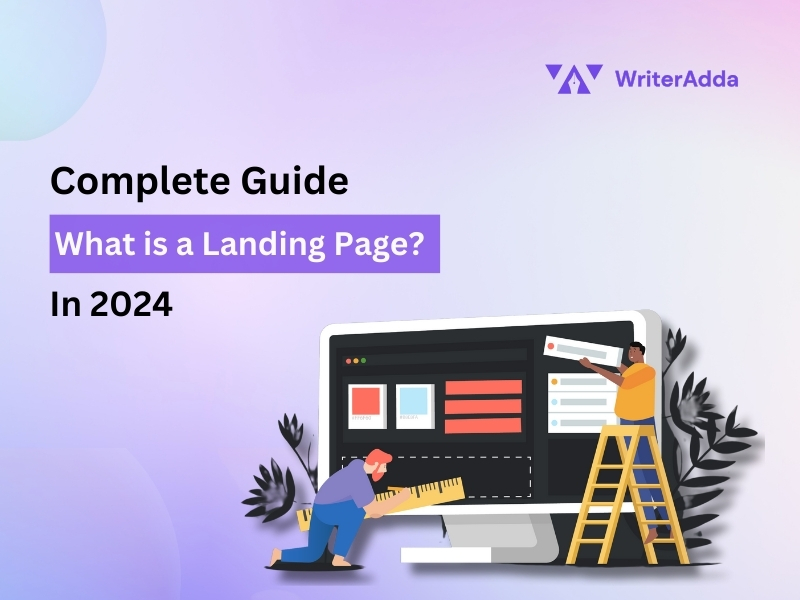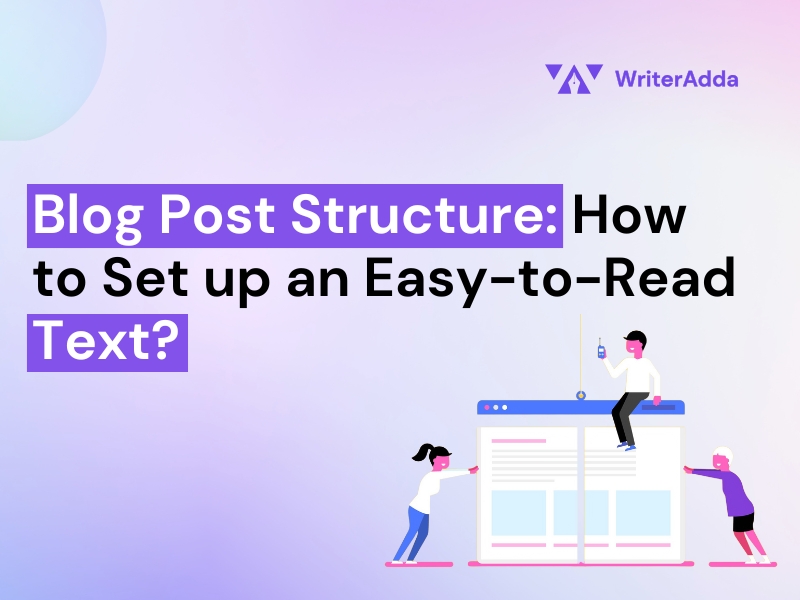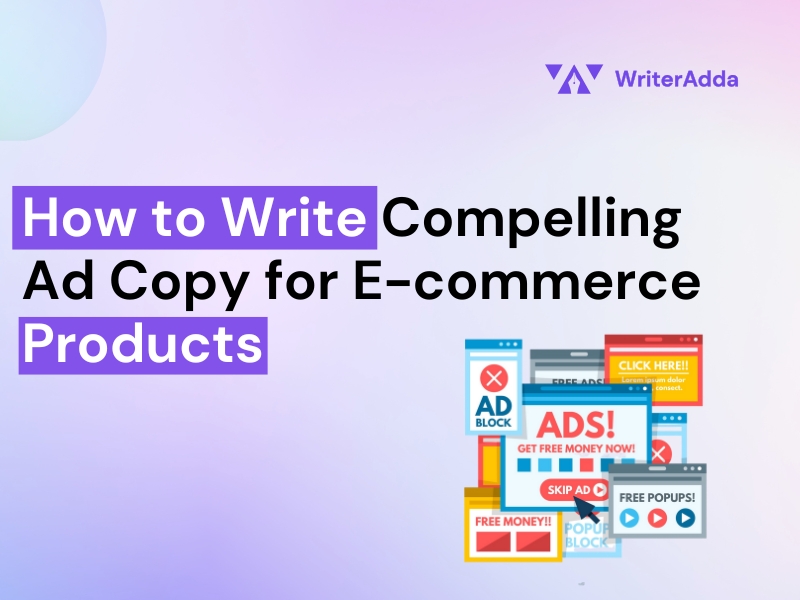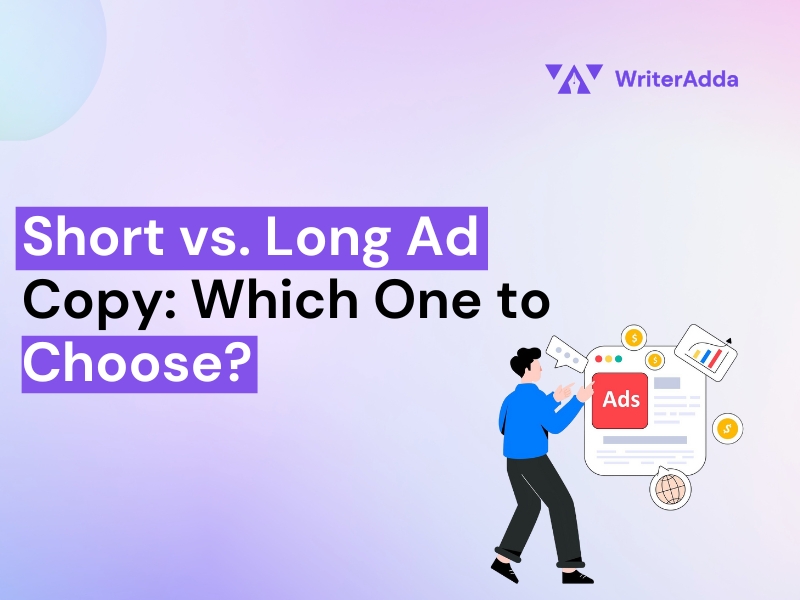In the fast-paced, competitive business world, an exceptional online presence can make or break a business. With the evolution of technology, businesses have started maintaining a robust online presence to enhance their business presence, reach their customers, and bring leads and conversions. As more and more businesses are moving towards online marketing, a complete knowledge of its components and terms becomes necessary. Digital marketing world has a whole new vocabulary, concepts, and theories that help businesses harness the full potential of it. The center of the online marketing strategy is a responsive, scalable, attractive, and highly engaging website. A website is a place where your customers and clients can get to know about your business and its products and services. At the heart of your website lies a powerful landing page that plays a crucial role in captivating and converting visitors into devoted customers. Landing pages are the backbone of successful online campaigns, product launches, lead generation, and various other internet marketing initiatives. Understanding the nuances of landing pages is important whether you’re a seasoned digital marketer or a curious entrepreneur trying to expand your online reach. In this blog, we will highlight what is a landing page, how to optimize it, and how its magic helps your business to reach new heights.
What is a Landing page?
A landing page is a standalone web page designed for the visitors to direct them to take a specific action on the website. It can be asking the visitor to purchase a product, subscribe to the YouTube channel, book a service, sign up for a newsletter, register for a webinar, and many more. A landing page can also be called a strategic entry point to your website to boost the conversion rate, grow the email list, increase sales, promote a new product, or even bring customers to the offline store. Visitors can arrive at a landing page through PPC advertising, social media advertising, email campaigns, organic results, or even social media posts. However, the most significant application of a landing page is to bring visitors from paid advertising and guide them to do a certain action.
Landing Page vs. Home Page
Many marketers mistake the landing page and homepage as the same thing, but in reality, there is a significant difference between the two. A landing page is different from a homepage in the sense that a homepage is a hub of different information and does not have a specific goal. It is created to encourage visitors to explore the website, visit different pages, read blogs, or take some action. On the other hand, a landing page is laser-focused on achieving a specific goal by directing the visitors to take specific action.
A Homepage encourages visitors to jump from one page to another and surf the website whereas a Landing page is a standalone page whose only aim is to bring conversions.
The Homepage has different calls to action for directing visitors to perform different actions like following on social media, signing up for a newsletter, filling up a form, downloading a brochure, etc. On the other hand, a Landing page has a single CTA that directs visitors to take a specific action, which is the ultimate objective of the landing page.
The Homepage’s main aim is to let visitors know about the business, their services, values, products, services and other information. It has a lot of potential distractions, which reduce the chances of conversions. However, a Landing page is super focused, meaning it has fewer links or CTAs, which can distract a visitor from taking a conversion. Its super-focused nature increases the chances of conversions due to the presence of a particular CTA that asks for conversion. The presence of related information like discounts, offers, and sharp headlines influences visitors to convert into customers.
Essential Components of a Successful Landing Page
Just like website optimization, a landing page also needs to be well-structured and optimized. A well-crafted, focused, and optimized landing page has the power to take your online business to the next level. A well-optimized landing page has a proper balance of various elements that play a crucial role in turning visitors into customers. The following are some fundamental components of a landing page’s anatomy:
Attention-grabbing Headlines and Subheadlines
Headlines are the first thing visitors see after visiting your landing page. An eye-catchy and attention-grabbing headline can immediately communicate the value, purpose, and content of the landing page. Besides headlines, crisp and concise subheadings are equally important to capture the interest of the visitors and encourage them to click on the CTA button.
A Unique Selling Proposition
Every marketer uses the same components in the landing, but what makes you different from others is your USP. Tell your customers about things that set you apart from your competitors and give them a solid reason to prefer your landing page over others. Highlight the benefits, features, reviews, case studies, clients, price value, marketing, etc., about your products or services. USP is a great tool to influence customers to make favorable decisions and take action.
Engaging Visuals
A picture is 90% more effective than text; therefore, using high-quality graphics like images, videos, sliders, etc., can easily influence the visitors to make a conversion. Using images can improve your message and help visitors to understand the products or services in a better way.
Call To Action
The focal point of your landing page is the CTA button. As CTA is the button that directs users to perform the desired action, ensure that it is placed in the center of the page, has proper color and highlights, correct alignment, and is clearly visible to the visitor. It should be compelling, persuasive, and actionable, like “Subscribe to the Newsletter,” “Get Started,” “Sign Up Now,” “Purchase now,” etc.
Social Proof
Social proof is persuasive, which means it creates a positive image of the brand and encourages visitors to engage. It gives your customers a sense of trust and credibility about the brand, turning them into loyal customers. Add testimonials, awards from reputable organizations, customer reviews, trust badges, number of signups, case studies, existing clients, etc., to instill confidence among the visitors.
Types of Landing Pages
Landing pages can be classified into 2 main categories:
- Lead generation Landing pages
- Click Through Landing pages
Lead generation Landing page
A lead generation landing page basically aims to collect the visitor’s information, like name, email address, mobile number, etc., in return for a free ebook, offer, or other resource. Such landing pages use forms as their main CTA, which targets receiving specific personal information of the visitors. Such information can ultimately be used to grow the email list, send customized offers, do SMS marketing, etc.
Click Through Landing Page
Click-through landing pages are frequently used in e-commerce and SAAS websites. These landing pages give further information and direct users to a product or service page where they can complete the action. They have an actionable CTA that sends users directly to complete a transaction, make a purchase, sign up for a newsletter, etc. Such pages also include persuasive information like product details and benefits, customer reviews, etc., to engage customers and support their buying decisions.
Why Website Optimization is Important for Landing Page Performance?
Website optimization plays an important role in unlocking the full potential of a landing page and improving its visibility and performance. Website optimization is vital for landing page visibility since it directly affects how easily your target audience can find and visit your landing page. Making your landing page reach the right people at the right time and enhancing its value and effectiveness is important. Optimizing your website and landing page according to the search engine algorithms and guidelines helps to increase the search engine rankings and enhance the visibility of the landing page. It includes improving page loading speed, making it mobile friendly, implementing SEO techniques, optimizing headings and subheadings, proper metatags, etc. As website optimization also includes making a website user-friendly, the performance of the landing page automatically rises. Enhanced user experience simply means increased conversion rates, which is the landing page’s ultimate purpose.
Why are Landing Pages Important?
Landing pages are the backbone of a successful marketing campaign. They play a significant role in directing visitors to take specific action and help businesses achieve the ultimate goal of online marketing campaigns. They work as the voice of a brand that educates the customers about new products, services, offers, webinars, etc., and instructs them to perform an action. Here are some key reasons why landing pages are important:
Conversion Optimization
Landing pages are designed with a specific goal in mind. It can be purchasing a product, filling out a form, booking an appointment, signing up for a newsletter, etc. Such pages include single-focused CTA, unlike a homepage, which ultimately encourages visitors to perform the desired action and fulfill marketing campaign goals.
Boost Your Credibility
Generally, people like clear and straightforward content that describes the features, benefits, and importance of your offering. Landing pages are free from any distractions and directly educate the visitors about the product or service and direct them to take specific action. Moreover, the presence of reviews and testimonials also fosters trust and enhances the credibility of your brand.
Targeted Marketing
Landing pages are laser-targeted towards a specific type of content, which helps you tailor your message for the particular audience and campaign. Targeted marketing ensures that the visitors coming to your landing page are actually interested in making a purchase or performing an action on your webpage.
Increase Traffic
Sometimes, lead generation may not be your ultimate goal. It can be brand awareness, high traffic, more reach and visibility, or even educating people about your products and services. Properly optimized landing pages get high rankings in SERP results, which means high organic traffic from google and other search engines.
Conclusion
Landing page is a great tool to bring customers, gather their data, and encourage them to take action. They play a major role in online marketing by offering visitors a focused and personalized experience. This approach helps remove distractions, boost conversions, get targeted traffic, improve tracking, and optimize marketing initiatives. We have discussed the landing page definition, the components of a landing page, the types of landing pages, why website optimization is vital for a successful landing page and the importance of a landing page. A single CTA in the landing pages makes it easy for visitors to take the desired action rather than jumping off to the other page of the website. In a nutshell, landing pages are an important tool for companies trying to increase their web presence, growing their business, and achieve specific marketing goals.
Frequently Asked Questions
Landing pages provide several benefits like attracting new customers, increasing conversions, enhanced targeting, accurate tracking, measurable results, increasing traffic, reducing distractions, lead generation, brand consistency, and many more. These are the goals of an online marketing campaign, and a landing page is the perfect medium to achieve the specific goals. Landing pages are designed for specific purposes like increasing sales, signing up for newsletters, following on social media, booking appointments, etc. They have a single CTA only for a specific purpose. Contrary to that, a regular website is a hub of information about various things to educate visitors. They have a navigation menu also to encourage visitors to move from one webpage to another, which lacks in a landing page to avoid distractions. Landing pages can easily be created with the help of page builders like Elementor, Mailchimp, Divi, WPBakery, Brizy, etc. These drag-and-drop page builders allow you to easily create a captivating layout and add content, images, CTAs, testimonials, catalogs, etc., without any coding knowledge. However, if you have the required coding skills, you can manually create a customized landing page according to your vision. Landing pages are nothing but a specific type of webpage that has a primary goal of directing visitors to perform a specific action and make a conversion. They are created with a single and clear purpose to convert them from mere visitors to devoted customers. Their primary focus is maximizing the conversion rate to increase the business's sales and propel its growth. No, it's always advisable to exclude the navigation links on a landing page to avoid distractions and make visitors stay on the single page only. The lack of navigation links allows visitors to concentrate on the landing page offerings and the primary CTA of it, which helps to drive conversions. You need a systematic and strategic approach to troubleshoot a poorly converting landing page. There can be many reasons for this, and you have to perform AB testing to check the issues and address them with critical thinking and problem-solving ability. You can check and correct the page loading speed, mobile responsiveness, layout and design, content, CTA placement, distractions, headlines, social proof, etc. Why do I need a Landing Page?
How is a landing page different from a regular website page?
How can I create a landing page?
How is the landing page related to web page conversion?
Should my landing page have navigation links?
How can I troubleshoot a poorly converting landing page?




